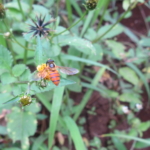


Sokoine University of Agriculture, Oregon State University & Ministry of Agriculture - Malawi
Malawi
8/2013—8/2017
Bruchids are endemic seed-eating weevils that are almost universal pests of stored legumes on farms in southern Africa. Loss in quantity and quality of bean seeds in southern Africa are caused by the larvae of two bruchid species Acanthoscelides obtectus and Zabrotes subfasciatus. Weeviled seed has a low market value; the longer the beans are kept in store, the greater the chance of complete crop loss. This causes farmers to sell soon after harvest when prices tend to be low. There is also nutritional quality loss due to protein and carbohydrate degradation and loss of seed viability leading to poor stand establishment. Since 2009 CCRP has supported a team led by Sokoine University of Agriculture (SUA) working in partnership with Chitedze Research Station (Department of Agricultural Research Services, Malawi – DARS) and Oregon State University to breed bean lines that are resistant to bruchids and to investigate combining resistance with other methods of control in an integrated bruchid management approach. The funding has contributed to establishing a biotechnology lab at SUA where molecular markers have been developed and used to validate resistance mechanisms transferred by breeding into two widely grown farmer preferred bean landraces. Screening of further landraces and lines from Malawi and Tanzania has led to the discovery of three types of beans that have resistance to both bruchid species. A further four years of CCRP funding is proposed to test farmer acceptability of newly developed resistant lines, to characterize the mechanism of resistance in the newly discovered lines and use these as parents for further hybridization, aiming for release of new varieties adapted in both Malawi and Tanzania. The “resistant” beans are not completely immune but delay bruchid development and reduce damage. Therefore, work will also continue with farmers to adapt use of botanical insecticides and solarisation as components of integrated bruchid management to be used with resistant varieties. The project will train two MSc students at SUA, and a PhD student will undertake some lab work at Oregon State University to use equipment and techniques not available in the region. The project will be aligned with a new initiative to develop bruchid and foliar disease resistance in beans to be funded by the USAID Feed the Future initiative. This will allow collaboration with University of Puerto Rico where bruchid resistant beans are being developed with a focus on Latin America.
Develop resistant varieties for resistance both bruchids (Acanthoscelides obtectus and Zabrotes subfasciatus), and evaluate novel sources of resistance and understand mechanisms of resistance to bruchids (both Acanthoscelides obtectus and Zabrotes subfasciatus).
Integrate Bruchid management strategies combining resistance and solarization for enhanced protection of beans against bruchid infestations. Research will ultimately lead to a package of IPM for bruchid management to be developed and promoted. On-farm trials will involve farmer assessment of a suitable IPM strategy for bruchid management, allowing reduced use of chemical pesticides in bean storageCombine Bruchid resistance with multiple disease resistance (ALS, CBB, BCMV) for increased productivity of beans.
Seed production and delivery arrangements of new developed bruchid resistant lines and varieties to farmersCapacity building by training for MSc students in plant breeding using MAS and development of IPM strategies for bruchid management
In year one, the project completed the screening of a collection of bean varieties and landraces for resistance to two bruchid species (A. obtectus and Z. subfasciatus). Using no choice feeding trials in the laboratory the project identified two Tanzanian bean landraces that demonstrated resistance to the two bruchid species based on number of emerging adults, number of damaged seeds, susceptibility index and days to adult emergence. Further investigations of the physical characteristics of bean seeds revealed that seed shape and seed pattern might be considered in choice of beans in view of reducing bruchids infestation depending on the dominant type of bruchid in a local area. This is a significant development because the identified landraces and breeding lines can be recommended and used as bruchid resistant materials to growers and bean traders, as they can be kept longer time after harvesting. The identified bruchid resistant bean genotypes can now be used a novel source of bruchid resistance and will become useful germplasm for genetic studies of the mechanism residing in these that confers resistance to bruchids. This will greatly contribute to new knowledge.
